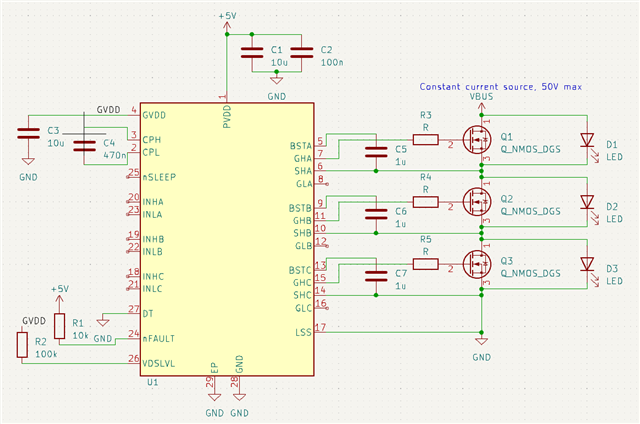Other Parts Discussed in Thread: DRV8300
Hello,
I would like to know if it is possible to use the DRV8328B as three separate NMOS static high side drivers.
Specifically, I would like to use it to selectively shunt three high-power LEDs connected in series, according to the following schematic:

This would be for quasi-static operation, switching less than once per second, no fast PWM.
I am particularly concerned that the DRV8328 power supply (PVDD) is 5V and not the same as the MOSFET power supply, and that the later can be significantly higher (up to 50V).
Is this going to work?
Thanks.
Michael

